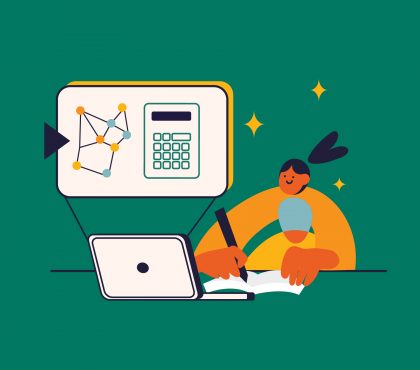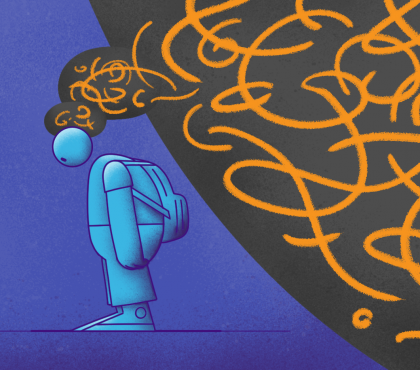Education technology indicates a particular area of technology that is dedicated to the evolution and use of tools. They could be software/hardware and processes for boosting the overall performance of education.
Though it sounds like a specialized segment, its implications can influence several parts of our lives. But what is educational technology? Do you need any special tool to implement it? Read more to learn whether you’re one of the people who potentially benefit from the progress of education technology and the right way you contribute to its development.
What Is Educational Technology?
Educational technology represents both tutorial and learning experience designs. This term also means the study and practice of creating suitable tutorials that combine the technology and learning theory. These educational technologists would be in charge of designing their effective instructions, assisting learning centers, and training specific programs.
As you know, the most traditional way of offering a lecture is the use of textbooks and blackboards (or whiteboards). However, doing so is unable to convey its full gist at times, especially when giving a long lecture. This easily bores your students and then leave them to lose important criterion of studying – concentration. When they lost their interest or focus, they won’t get the whole concept and find it hard to keep things in mind for a long time.
But what if you decide to offer the similar lecture with an animated video instead? Yes! There’s no way for your students to lose their focus. That’s because those animations are fascinating, fun, and informative. With the help of them, you will gain the power of making someone focus on your lesson for hours without boring them.
The good news is that the animation for education today won’t be limited to movies and games, but its horizon is now boundless, such as infographics (both static and animated), etc. In the following section, we’d like to take a closer look at the five keys to success in educational technology.

Update training method for a more engaging expeirence in the New Normal, through actual successful case studies.
Enhance Training Experience in the New Normal with Animation
Top 5 Keys to Success in Educational Technology
1. Attentive Implementations
To promote educational technology, the implementation is an essential element in the whole process. It’s true, especially when you’ve finally understood what educational technology is and how it affects specific outcomes. Being more attentive when implementing the technology should be needed to ensure its effectiveness in education. If it’s ineffective, then you must improve it or even abandon it.
Moreover, when working toward the success, be clear and stay concise about your goals! Also, try to concentrate more on the usage specifics instead of focusing only on the larger and loftier language.
2. Use Suitable Tools and Techniques
When thinking of educational technology, the first thing coming to your mind should be the use of suitable tools and techniques that can improve your teaching. As an educator, you often have to develop some appropriate methodologies for accomplishing the instructional tasks and then receiving desired outcomes.
These methods should be refined gradually and over time, just like how the computing technology keeps rolling out continuously and regularly.
If not using the proper tools and techniques, it only adds no value yet a heavier price to the overall education process. So in short, the inclusion of appropriate tools and techniques will result in the results that you, an educator, desires at last.
3. Understand What Type of Learning Teachers and Administrators Needed
The demand for the continuous and professional learning has always been one of the overlooked elements for the implementation of educational technology. Since each educator differs in his or her technology and pedagogical expertise, that advanced learning needs to be suitably made to satisfy the needs of all teachers at distinct levels.
In other words, understanding the instruction that has the in-school and online learning communities can guarantee that both teachers and administrators know how their digital tools assist their work.
4. Assess Until Seeing the Improved Learning Results
If seeing no further improvement when you adopt new technology into your teaching process, then there is no point to relying on it anymore. For that reason, keep up with the experimentation and use of new technologies: podcasts, Internet access, smart classrooms, and laptops. Do this for every student, and then assess the outcomes as well as make certain changes in your methodologies.
Don’t forget to address your weaknesses to assess the results again until finally evaluating your work’s efficacy. The success comes when you can prove the boosted learning results. As long as your metrics exactly stand for the learner’s experience, then you’ve got a reason for the continued application of technology in the teaching and learning attempt.
5. Facilitate Learner’s Memory and Cognition
The human abilities won’t be sufficient to the demands of the advanced teaching and learning enterprise, so it’s where educational technology has a crucial role. With the use of videos, you have a chance to bring more depths of the universe to your students’ eyes. Aside from this, access to the Internet can offer the learners immediate access to their thoughts and cognition of things. You can consider it as a typical example of how technology succeeds in facilitating the learners’ senses, memories, and cognition.
However, there are some serious mistakes you need to avoid if you want to reach success in your educational technology segment.
Top 4 Mistakes to Avoid When Using Educational Technology
Increasingly, technology has been a regular feature of your lecture and learner’s lesson across the curriculum. It is an ideal way to engage your students and bring their learning experience alive with the use of the videos, interactive apps, and even social media.
If you’re about to plan a lesson with some digital technologies, then there will be some noticeable errors you must avoid as much as possible. Here they are:
1. Not Preparing a Backup Plan
Not having a backup plan means your lecture with technology can go wrong, and there’s nothing you can help it.
For example, the webpage you’re about to use suddenly goes down for maintenance at an important time. Or when the Internet connection in your school gets interrupted. Or when your learners seem not to engage in some tasks that you expected from the start.
Once any of these cases occur, it’s best to get yourself a plan in advance or think of how you can save your lecture before it fails. By preparing a backup plan, you tend to be more confident when having to fight unwanted experiences during the lesson.
2. Use the Technology You’re Not Familiar with
Do not ever use the technology that you don’t have any particular knowledge of. Whenever you ask the learners to use a specific app, you should be an expert in how it operates. It lets you provide your students with the helpful guidance. Yout students probably struggle hard and soon get frustrated, or simply do whatever they shouldn’t do.
Try to understand the ins and outs of the technology that you’re planning to use in your lecture. Think about certain times when you must discuss something new with your students!
3. Use Distracting Applications
One of the most common complaints when it comes to using YouTube in any classroom is how they show many distracting contents. It goes the same for the other social media sites, and for some promotional contents shown on these sites.
If you’re capable of embedding the specific content from a site to your designed web page, you can address the problem. But try to consider the true distraction element when choosing the digital tools to use.
4. Rely on Tools Requiring the Creation of User Accounts
This is a challenge for your students to remember different accounts and passwords at the same time. Especially for younger learners, the creation of their accounts on the social media won’t be effective as expected. It should be within the learner’s rights to reject making an account on a site when it violates their privacy. But this is also based on the type of information requested by the site.
Conclusion
Technology plays an essential role in the classroom with the aim of promoting the larger engagement and knowledge in the learners.
As you see, it’s not only the global opportunity but also the future of the overall education. If you’re still new to these digital technology tools, hopefully, our tips above could help you have a good start! At least you would know the key to success in educational technology and common mistakes to avoid during your lectures.
What is educational technology? You now know the answer! Now it’s time for you to do some research for finding great tools that can take your students to the next level.

Sean Bui, the founder and creative director of F.Learning Studio, is a respected leader in the e-learning and multimedia production industry. With over 10 years of experience, he has dedicated his career to helping organizations create engaging and impactful learning experiences.
Under his leadership, F.Learning Studio has grown into a trusted partner for organizations in the education, healthcare, and corporate training sectors, producing over 2,000 minutes of educational animation.




